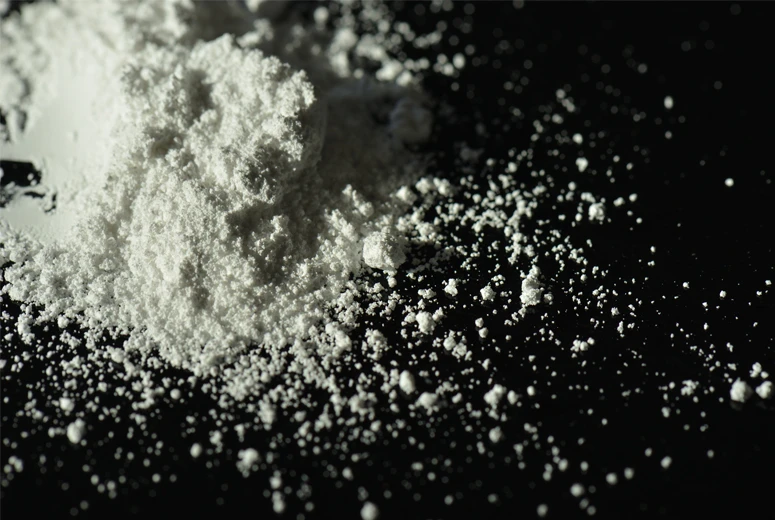Feb . 08, 2025 06:16
Back to list
Calcined Mica F-60
Mica powder is a versatile, shimmering material derived mainly from muscovite or phlogopite mica, minerals that belong to the silicate family. It is prized for its unique characteristics and myriad applications across various industries, including cosmetics, paints, art supplies, and automotive manufacturing. What makes mica powder particularly appealing is its natural sparkle, high heat resistance, and ability to add a pearlescent sheen to products.
For those considering using mica powder in personal projects, a practical understanding of its application methods is beneficial. Its consistent particle size ensures a smooth blend with other mediums, but care should be taken when mixing with liquids to avoid clumping. Techniques such as dusting, brushing, or stirring can be employed to achieve the desired effect. Experimenting with different binding agents might be necessary to ensure adherence to surfaces such as paper or fabric. While the advantages of mica powder are numerous, safety precautions must be heeded, especially during handling. It is crucial to use personal protective equipment such as masks and gloves when working with mica powder in enclosed spaces to avoid inhalation or skin irritation. Ensuring proper ventilation in the workspace can mitigate respiratory risks associated with airborne particles. Expertise in mica powder encompasses not only understanding its properties and applications but also having robust knowledge of its emerging trends and technological advancements. For instance, recent innovations involve enhancing mica powder’s luminescence for advanced display technologies in electronic devices. To establish authoritativeness in the industry, one must continuously engage with the latest research, collaborate with professionals across sectors, and participate in forums and discussions on sustainable sourcing and usage of mica powder. Trustworthiness can be bolstered through transparency about sourcing, comprehensive safety testing, and clear labeling on consumer products to inform users of mica’s benefits and risks. Ultimately, whether you are a manufacturer, artist, or consumer, appreciating the multifaceted utility of mica powder can open doors to more creative and innovative applications, pushing the boundaries of what’s possible in both artistic endeavors and industrial advancements.


For those considering using mica powder in personal projects, a practical understanding of its application methods is beneficial. Its consistent particle size ensures a smooth blend with other mediums, but care should be taken when mixing with liquids to avoid clumping. Techniques such as dusting, brushing, or stirring can be employed to achieve the desired effect. Experimenting with different binding agents might be necessary to ensure adherence to surfaces such as paper or fabric. While the advantages of mica powder are numerous, safety precautions must be heeded, especially during handling. It is crucial to use personal protective equipment such as masks and gloves when working with mica powder in enclosed spaces to avoid inhalation or skin irritation. Ensuring proper ventilation in the workspace can mitigate respiratory risks associated with airborne particles. Expertise in mica powder encompasses not only understanding its properties and applications but also having robust knowledge of its emerging trends and technological advancements. For instance, recent innovations involve enhancing mica powder’s luminescence for advanced display technologies in electronic devices. To establish authoritativeness in the industry, one must continuously engage with the latest research, collaborate with professionals across sectors, and participate in forums and discussions on sustainable sourcing and usage of mica powder. Trustworthiness can be bolstered through transparency about sourcing, comprehensive safety testing, and clear labeling on consumer products to inform users of mica’s benefits and risks. Ultimately, whether you are a manufacturer, artist, or consumer, appreciating the multifaceted utility of mica powder can open doors to more creative and innovative applications, pushing the boundaries of what’s possible in both artistic endeavors and industrial advancements.
Prev:
Next:
Latest news
-
Transforming Surfaces with Mica-Enhanced Paints in Coatings and DecorationNewsJul.02,2025
-
The Ultimate Guide to Mica-Based Luminous Colors with Pearlescent PigmentNewsJul.02,2025
-
The Critical Role of Mica in Industrial Applications in Welding and Oil FieldsNewsJul.02,2025
-
Revolutionizing Automotive Aesthetics with Modified Plastics Pearlescent PigmentsNewsJul.02,2025
-
The Secret with Mica Powder for Cosmetics Behind Radiant, Natural MakeupNewsJul.02,2025
-
Enhancing Performance in Polymer Applications with Mica Powder for RubberNewsJul.02,2025
Products categories









